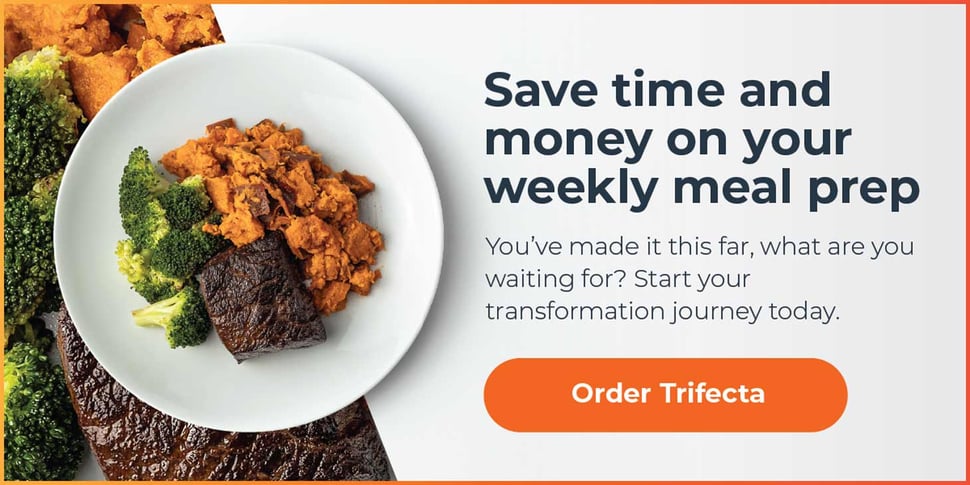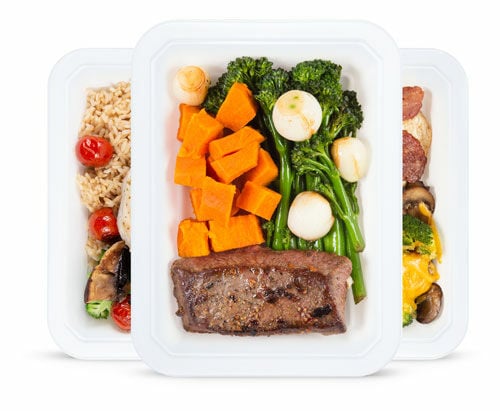This high-intensity training program is more than ab-shredded athletes and warehouses filled with gym equipment. Could this be the new workout routine you’ve been looking for to shed some pounds and push your body to the limit?
We asked our in-house expert, Angel Cardenas, a 45-year-old dad of 3, who has been in the CrossFit world for the past 11 years, recently won the 2022 Open, and competed in numerous competitions. Angel breaks down all you need to know about CrossFit and provides some tips for those just getting started.
Q: What is CrossFit?
“CrossFit came out in 2007, right here in California–in Santa Cruz—so it’s still a fairly young sport.
CrossFit is a mix of everything when it comes to fitness; it’s not just about strength—you have to have some flexibility, doing movements on rings, or a pull-up bar, getting upside down, and walking on your hands.
It tests your strength, endurance, and gymnastic skills; it’s so much fun because you’re not just focused on one thing. It’s easy for me to get passionate about CrossFit training being a former athlete when I was in college. For a lot of people who have a competitive sports background, after college they just lose that edge and drive; CrossFit definitely inspired me, and I am sure these other kinds of people, to get back into the competitive fitness area, and not just to compete against others but to push and compete against myself.
There is also an amazing community aspect to CrossFit that’s not talked about as much; you’ll meet like-minded people in the gyms and have the opportunity to build a support network to push you even further in your health goals than you’d think. You can choose group classes, or work one-on-one with a coach, or once you become familiar and feel confident enough just do the movements on your own. It really is a choose your own adventure regimen.”
CrossFit isn’t just a fitness routine, it's a lifestyle built around safe, effective exercise, proper nutrition, and a supportive community.
Q: What are the benefits of CrossFit?
“CrossFit is good for overall functional fitness, fat loss, building strength, and improving your aerobic fitness. Most exercises simulate real-life movement patterns we practice in everyday life, so it really is all about strength and conditioning.
What I enjoy the most about CrossFit and why I feel it is so good for you, is how the different athletic demands constantly vary. One day you can work on a strongman heavy lifting component, then a high-skill gymnastics movement, and the next day a long endurance test.
Your body experiences these different stimuli and continues to be challenged. I think for this reason CrossFit is instrumental in sculpting your overall fitness in different domains; you’ll train your stamina, strength, flexibility, speed, coordination, powder, agility, balance, accuracy, and cardio and breath endurance.”
Q: What does a CrossFit workout look like?
“A CrossFit workout is typically structured in a one-hour class. The training is usually broken down into 3 parts. Warm-up, Strength (or skill), and WOD (workout of the day, or conditioner).
A coach-led warm-up primarily gets the particular muscle groups about to be used nice and loose. The heart rate gets going, and blood gets pushed through the body.
Next is a strength component. Athletes will work on some type of squat, push or pull with weights. Back squats, fronts squats, deadlifts, clean and jerk, and snatches are just a few weightlifting movements to name. Depending on the day, the strength component may be substituted with a “skill” movement. Athletes will practice bodyweight skills such as handstand pushups, pull-ups, jump rope, rope climbs, etc.
The last element in a CrossFit workout is the WOD. The workout of the day is always different as athletes have to adapt to a new combination of movements. Workouts can range from 4 minutes to 25+ minutes. Workouts can combine all different elements of movements that are within a certain time frame. Some workouts are structured to be done as fast as you can as well.”
Q: Is CrossFit dangerous?
“With CrossFit, there's always a high risk of injury as you're pretty much moving weights and your body weight as fast as you can, for the most part. Also, when you add in fatigue during an intense workout, you can easily lose good form and risk injury.
But the truth could be said about any sport, workout routine, or fitness regime; if you’re not going in with a plan or being mindful of what your limits are, or trying to do too much at once, you’re going to put yourself at risk for injury.”
Q: Does nutrition play a role in CrossFit?
“Nutrition is definitely up there as one of the most important aspects of CrossFit, or just improving your health in general. When CrossFit first started, everyone was on the paleo diet, which is a high-protein, moderate fat, and medium to low-carb approach; basically, a lot of lean protein, nuts and seeds, and some fruit with little to no sugar or starch.
Although this approach didn’t work for me, it does help people understand that sound nutrition and a high-quality diet will help you reach your goals and impact your performance.
Focusing on my nutrition completely changed the game for me. In the past, I never had a planned approach to my nutrition. I would eat some banana bread or a bowl of cereal and freestyle breakfast along with most of my meals throughout the day. Dinner was always whatever the family would be eating, like spaghetti or tacos, or meatloaf.
I’ve never eaten super unhealthy. But starting to have a dialed-in approach to eating has helped me start to eat like a pro athlete, fueling my body and helping me recover.”
Find your perfect meal plan using this 2-minute quiz:
Q: What are the CrossFit Games?
“The CrossFit Games are like the Superbowl of the CrossFit world, and include athletes from around the world competing in a variety of unannounced events, with different movements, equipment, and time limits; definitely a test of strength, speed, endurance, and skill.
Anyone can train for the CrossFit Worldwide Open — for my division (45-year-olds and up), there are around 13,200 competitors who compete to get to the top 10%. Then you move onto the quarter-finals, where the top 30 go to the semi-finals (where I am now), and finally, 10 go to the finals.”
Q: Tips for anyone just getting started?
“I just met a few people, one of them who had been it for a year and wants to compete; but no matter if you’re looking for a good conditioning fitness routine or trying to compete, these are my tips for anyone just starting out:
1. Be patient
Take things slow and focus on learning the movements first. There’s no need to rush—if you go in and want to learn fast and learn everything at once.
That’s how you get hurt. Plus, there really isn’t an age limit or timeframe; I am a 45-year-old dad of 3 who has been doing CrossFit for 11 years. When I first started out, I didn’t even place in the top 1000. But with dedication, patience, and intentionality, I made it past the Open and qualified for the quarterfinals and now the semi-finals.
2. Find a good gym
If you’re in a gym that has a great community, coaches, and people, listen to those coaches, and don’t try to do it all on your own. There are a lot of good gyms; see which one works best for you.
You’ll know once you do, this will also give you a chance to make new friends and connect with a community that is passionate about health and wellness.
3. Prioritize rest, nutrition, and sleep too, not just your workouts.
CrossFit is more than just the workouts, it's a lifestyle. And no matter what your health goals are, whether it's losing weight or training for the open, you’ll want to take into account other factors that impact your health and performance.
Nutrition definitely changed the game for me, and once I got mine dialed using Trifecta Meal Prep, I saw a huge difference in my performance and recovery time. But as I became more intentional about what I was fueling my body with, I also started to notice how my sleep, stress levels, and other factors were impacting my body and my goals.
4. Set small goals
Start off with small goals, whether they are a month out or three months out, like ‘I want to stand upside down on my hands for 10 seconds or 15,’ etc. Setting smaller goals is a great way to monitor your progress, celebrate small victories, and continually have the opportunity to improve in any areas you’d like to.
Ready to get moving? Download your free workout guide below!




